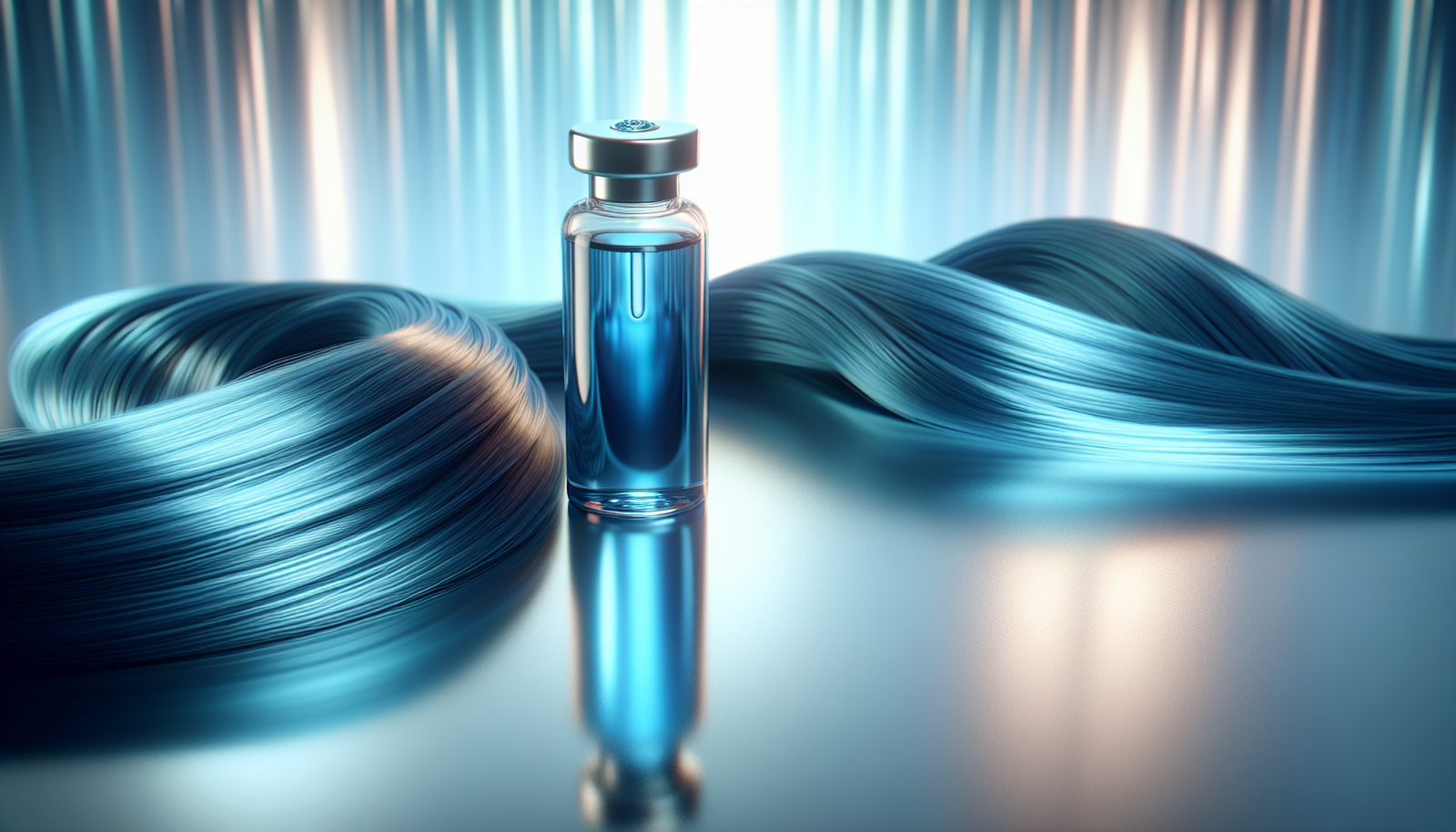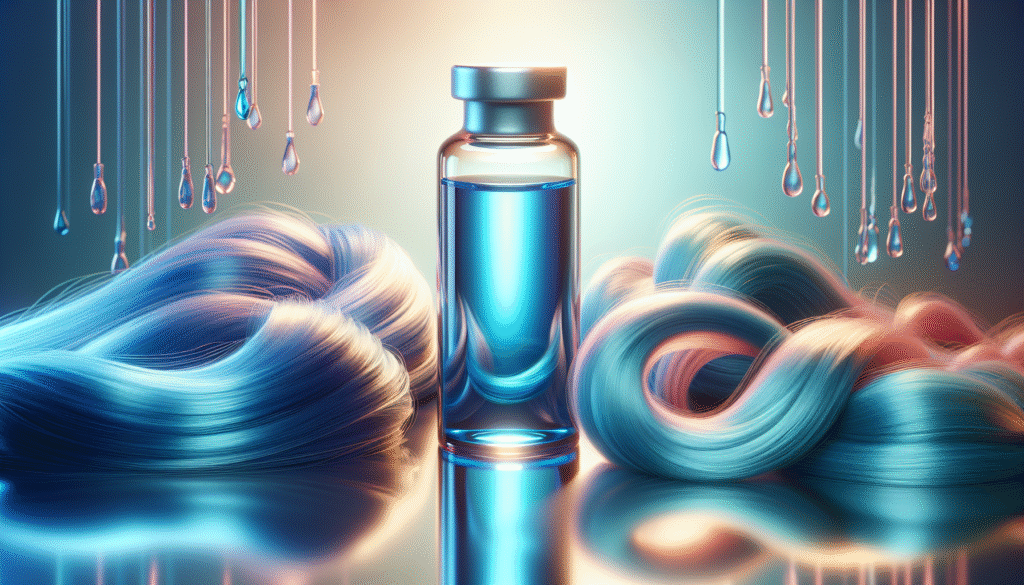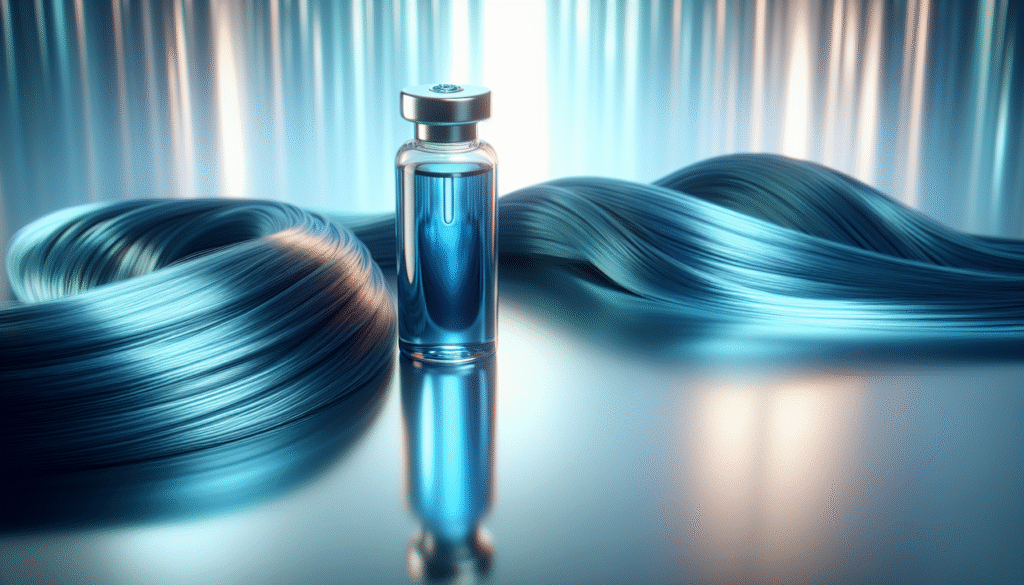
What if a single compound could change the way you think about hair health? Methylene blue, a dye with a rich history in medicine, is gaining attention for its potential benefits beyond its traditional applications. As you consider ways to enhance your hair health, understanding the properties and uses of methylene blue may lead you to a new avenue in combating hair loss.
Understanding Methylene Blue
Methylene blue was first synthesized in the 19th century and has since been used in various medical applications, including as a treatment for methemoglobinemia, a condition where hemoglobin is unable to hold oxygen effectively. Its properties as a dye and a medication have sparked curiosity about its potential in promoting hair health.
The Chemical Composition
Methylene blue (C16H18ClN3S) is founded on a phenothiazine structure. This molecular composition contributes to its various properties, such as antioxidant activity and cellular respiration enhancement. These qualities are particularly significant when assessing its use in hair care, as healthy hair growth is intrinsically linked to optimal cellular function.
Historical Uses in Medicine
Traditionally, methylene blue has been utilized in medicine for its antiseptic and antifungal properties. Over time, research has illuminated its role in enhancing blood flow, which carries implications for hair follicle health as well. The possibility of repurposing this compound for hair loss treatment represents an intersection of dermatology and innovative therapy.
The Biology of Hair Loss
Understanding hair loss requires familiarity with hair biology and how various factors can contribute to its thinning and shedding. Several common causes of hair loss include genetics, hormonal imbalance, stress, nutritional deficiencies, and certain medical conditions.
Types of Hair Loss
Different types of hair loss affect people in various ways:
- Androgenetic Alopecia: Often referred to as male or female pattern baldness, this type of hair loss is hereditary.
- Telogen Effluvium: A temporary shedding of hair often triggered by stress or external factors.
- Alopecia Areata: An autoimmune condition that causes sudden hair loss in patches.
- Traction Alopecia: Hair loss caused by prolonged tension on the hair shaft, often due to styles like tight braids or ponytails.
Understanding these types can help clarify how treatments like methylene blue might play a role in addressing specific conditions associated with hair loss.
Hair Growth Cycle
The hair growth cycle comprises three phases: anagen (growth), catagen (transitional), and telogen (resting). An imbalance in this cycle can disrupt hair production, leading to thinning or loss. Therefore, any treatment aiming to enhance hair health must somehow influence these phases positively.

The Science Behind Methylene Blue and Hair Health
Can methylene blue promote hair growth or prevent loss? To comprehend the potential effects of this compound, it is vital to look at the scientific mechanisms by which it operates.
Antioxidant Properties
Methylene blue has established antioxidant properties that can combat oxidative stress—a significant contributor to hair loss. Oxidative stress results from an imbalance between free radicals and antioxidants, leading to cellular damage. By neutralizing free radicals, methylene blue may help maintain the integrity of hair follicles.
Enhancing Mitochondrial Function
Mitochondria are the powerhouse of cells, producing the energy required for various cellular processes including hair growth. Research indicates that methylene blue can enhance mitochondrial respiration, potentially leading to improved energy availability for hair follicle cells.
| Mechanism of Action | Potential Effect on Hair Health |
|---|---|
| Antioxidant Activity | Protects hair follicles from oxidative damage |
| Enhances Mitochondrial Function | Boosts energy supply for hair growth |
| Promotes Circulation | Increases blood flow to hair follicles |
Increased Circulation
One of the vital factors influencing hair health is blood circulation. Increased circulation means enhanced delivery of oxygen and nutrients to the hair follicles, which are essential for growth and repair. Methylene blue has been shown to improve microcirculation, which may directly benefit the scalp and hair.
Current Research and Findings
While the foundational science supporting methylene blue’s role in hair health is compelling, ongoing research is necessary to fully elucidate its effects.
Clinical Studies on Methylene Blue
Recent studies have investigated methylene blue’s potential benefits for various health conditions, but dedicated research focusing specifically on hair loss remains limited. Preliminary findings suggest that its application may improve hair density and growth rates in animal models.
Case Reports and Anecdotal Evidence
Some anecdotal reports from individuals using methylene blue for hair health describe promising results. While such narratives provide insights, they often lack rigorous scientific validation. Further research is imperative to confirm these observations and provide standardized treatment protocols.

How to Use Methylene Blue for Hair Care
If you consider integrating methylene blue into your hair care regimen, understanding the appropriate steps is vital for safety and efficacy.
Forms of Application
Methylene blue can be acquired in several forms, including topical solutions, shampoos, and even as part of specific hair treatments. Here’s how you might consider using it:
- Topical Application: Diluting methylene blue in a carrier oil or serum to apply directly to the scalp.
- Shampoos: Using products formulated with methylene blue may offer a convenient way to treat your scalp as you wash your hair.
- Professional Treatments: Consulting a dermatologist or trichologist for supervised application can ensure safe and effective use.
Safety Precautions
While methylene blue is generally considered safe in appropriate doses, caution is warranted. Direct skin irritation can occur, which means a patch test is advisable prior to full application.
- Conduct a Patch Test: Applying a small amount to a discreet area can help assess susceptibility.
- Consult a Professional: Speaking with a healthcare provider ensures that you understand the potential benefits and drawbacks based on your personal circumstances.
Recommended Dosage
Currently, research does not provide standardized dosages for methylene blue specifically aimed at hair care. Monitoring the response to treatment and adjusting dosage accordingly is crucial for finding what works best for you.
Potential Risks and Side Effects
Like any treatment, methylene blue comes with potential risks and side effects that you must consider before use.
Common Side Effects
- Skin Irritation: Itching or redness can occur at the site of application.
- Temporary Blue Staining: Methylene blue can cause temporary discoloration of the skin or hair, which may be undesirable for some users.
Allergic Reactions
Though unheard of, allergic reactions to methylene blue, such as rashes or swelling, may arise. Discontinuing use and consulting a physician should occur if such symptoms occur.
Drug Interactions
Methylene blue can interact with certain medications—particularly those that affect serotonin levels. Before integrating methylene blue into your routine, review your current medications with a healthcare provider to avoid complications.
Holistic Approaches to Hair Health
While considering methylene blue, remember that a holistic approach to hair care encompasses more than just topical applications. Nutrition, lifestyle choices, and additional treatments also play vital roles in maintaining healthy hair.
Nutrition and Hair Health
A diet rich in vitamins, minerals, and proteins promotes optimal hair growth. Nutrients of particular importance include:
- Biotin: Supports hair structure.
- Iron: Essential for oxygen transportation to hair follicles.
- Omega-3 Fatty Acids: Nourish the scalp and reduce inflammation.
Stress Management
High levels of stress can contribute to hair loss, making stress-reducing practices essential. Techniques such as mindfulness meditation, yoga, or regular exercise can improve your overall well-being and, consequently, hair health.
Professional Treatments
Various professional treatments can complement home care efforts. These might include:
- Minoxidil: Commonly used for treating hair loss.
- Platelet-Rich Plasma (PRP) Therapy: Involves injecting platelets from your blood into the scalp to promote healing and hair growth.
Conclusion
While methylene blue shows promise for hair health, particularly regarding its antioxidant and circulation-boosting properties, more research is essential to substantiate its efficacy in preventing hair loss. Adopting a multifaceted approach that encompasses diet, stress management, and professional guidance can optimize your results. As the conversation around hair health continues to evolve, staying informed on emerging therapies like methylene blue can empower you to take charge of your hair health journey. Your hair is more than just a crown; it reflects your overall vitality and well-being. A well-rounded perspective on care will lead you toward achieving the vibrant hair you deserve.